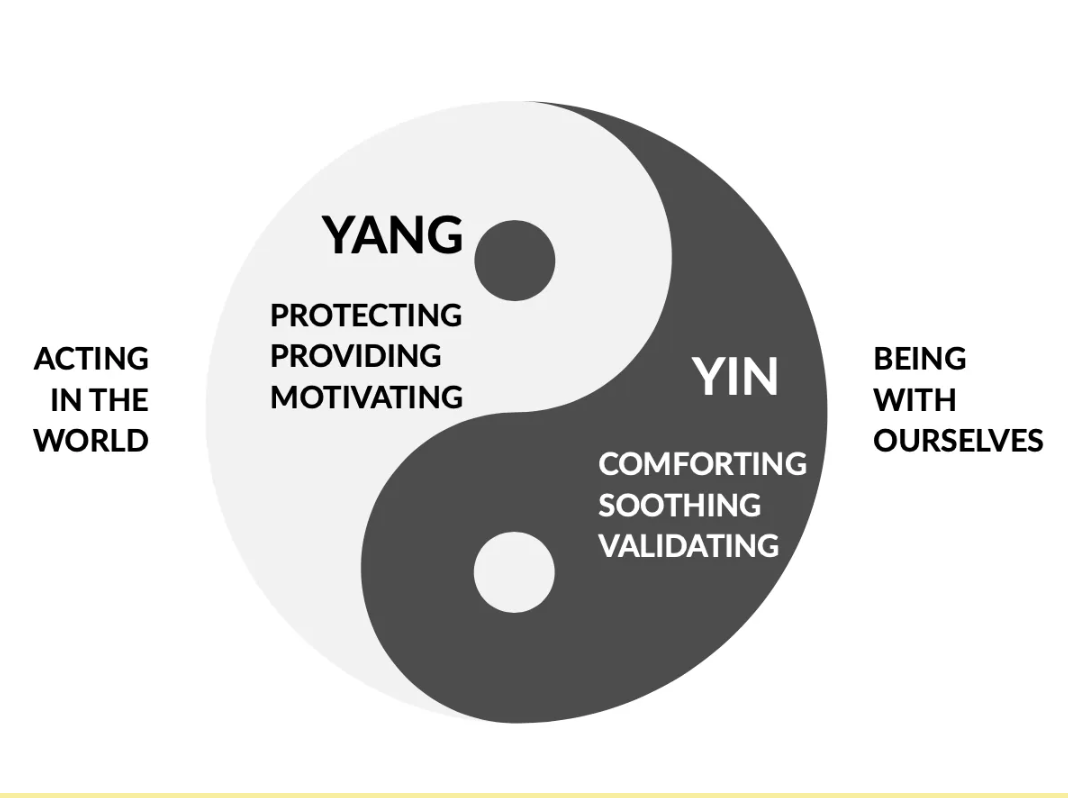FIERCE SELF COMPASSION
Self-compassion can be considered to have two parts: the feminine and the masculine. In traditional Chinese philosophy, this duality is represented by yin and yang (Neff & Germer, 2018). The three core components of self-compassion according to Neff’s theoretical model (Neff, 2016) are self-kindness, common humanity, and mindfulness of suffering. In terms of yin self-compassion, self-kindness involves soothing and comforting oneself when suffering, common humanity involves recognising that pain is an inevitable part of being human, and mindfulness involves being aware of and open to one’s pain and suffering in the moment. Approaching pain and suffering in this yin way allows one to begin to transform and heal. An example of yin self-compassion for a person who is experiencing burnout at work would be drawing a hot bath and playing relaxing music at the end of the working day.
In yang self-compassion, also known as fierce self-compassion, self-kindness, common humanity, and mindfulness manifest as stepping up and protecting oneself, standing with others who have experienced similar disharmony, and in clearly seeing the truth. In this way, yang self-compassion shows up as fierce, inner strength (Neff & Germer, 2018). An example of yang self-compassion for the person experiencing burnout at work would be speaking up to the boss about taking some time off or cutting down your current workload. Whereas many existing self-compassion therapeutic exercises help clients enact yin self- compassion, this tool helps clients explore and develop both yin and yang self-compassion.


